The Blue Velvet Project
Blue Velvet, 47 seconds at a time by Nicholas Rombes
-
The Blue Velvet Project: A Pause
The project is on pause today, and will return on Wednesday with post #123 with a frame from second 5781. In the meantime, here is a peephole look into the frame: And here are some key words that will govern Wednesday’s post: night glass creaking collective unconscious rhizome Laura Mulvey escape Patricia Norris false selves Over the period of one full year — three days per week — The Blue Velvet Project will seize a frame every 47 seconds of David Lynch’s classic to explore. These posts will run until second 7,200 in August 2012. For a complete archive of… Read more
-
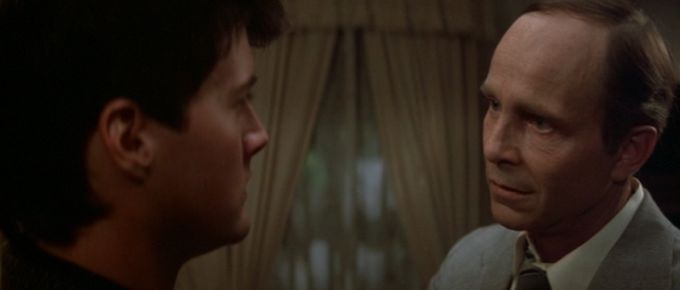 The Blue Velvet Project, #122
The Blue Velvet Project, #122
Second #5734, 95:34 There is a look of pity on Detective Williams’s face as he delivers his warning to Jeffrey not to “blow it.” At this point, it’s not entirely clear whose side the Detective is on; is his Hollywood stock detective outfit for real, or is he—like the “well-dressed man”—wearing a disguise? His warning to Jeffrey, as he takes him by the arms and looks into his eyes, is like a secret communication, a signal to Jeffrey not to rush things, not dig too deeply because what he might find at the terrible, rotten core of things is not… Read more
-
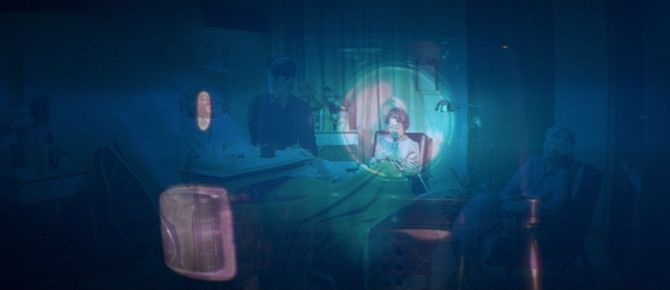 The Blue Velvet Project: Detour Into a Dissolve
The Blue Velvet Project: Detour Into a Dissolve
A frame from between posts 120 and 121. By the 1830s, he [Henry Langdon Childe] had developed and perfected the [magic lantern] technique of ‘dissolving views,’ in which one picture faded out as the next one faded in. The images were aligned on the screen and the light remained a constant intensity, creating a smooth, gradual transition. This permitted a wide variety of effects that had not previously been possible. (From The Emergence of Cinema, by Charles Musser, University of California Press, 1990.) A dissolve is the superimposition of a fade-out onto a fade-in, achieved by reversing and them re-filming… Read more
-
 The Blue Velvet Project, #121
The Blue Velvet Project, #121
Second #5687, 94:47 Jeffrey approaches Sandy’s house, to pick her up for a date. He wears a black shirt and a white tie. Neither he nor the audience, at this point, know the meaning of the police car. The lens flare cuts the screen in half horizontally. In the fantasy, science fiction dimension of the film, the blue light is a laser beam, aimed at Jeffrey. The car is Detective Gordon’s, the Man in Yellow. He will enter the house, and will spook Jeffrey. In response, Detective Williams will take him by the shoulders and tell him: “Easy does it,… Read more
-
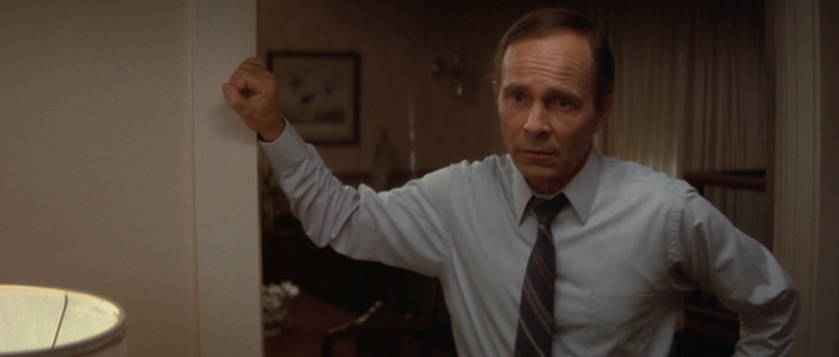 The Blue Velvet Project, #120
The Blue Velvet Project, #120
Second #5640, 94:00 The space behind Detective Williams — his accusatory gaze upon Sandy moments after Jeffrey has left — is unexplored in the film. He stands with his back to the darkness, his hand against the wall. There is the possibility of a fist. In a 2003 interview, filmmaker Chris Marker said that DVD technology is obviously superb, but it isn’t always cinema. Godard nailed it once and for all: at the cinema, you raise your eyes to the screen; in front of the television, you lower them. Then there is the role of the shutter. Out of the… Read more
-
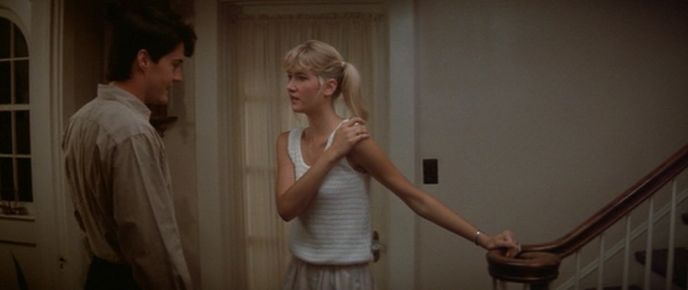 The Blue Velvet Project, #119
The Blue Velvet Project, #119
Second #5593, 93:13 Blue Velvet nears its final act, and still the relationship between Jeffrey and Sandy remains obscured in mystery. “Is Friday still on?” he asks her, loudly enough for her father to hear, in an effort to keep up the façade that their relationship is as innocent as something out of the Andy Hardy films. There are the facts of Sandy, and the beauty of her hands and fingers and knuckles, and her exposed ear (“I hear things…”), and the force of her father Detective Williams invisible for now, but present in the off-screen space implied on this… Read more
-
The Blue Velvet Project: Confession Redux
May 28 The Blue Velvet Project will resume with post #119 on May 30th. In the meantime, this is a re-post of the April 23 confession, with a new confessional update at the bottom of the post. ————————- As author of The Blue Velvet Project—which owes a moral debt to the Dogme 95 movement, whose practice of constraint was an inspiration—I feel obligated to make this public statement of confessions regarding the rigors of the project. This is done in the spirit of Thomas Vinterberg’s confession regarding his film The Celebration. Despite the fact that I promised Mr. Macaulay, Filmmaker… Read more
-
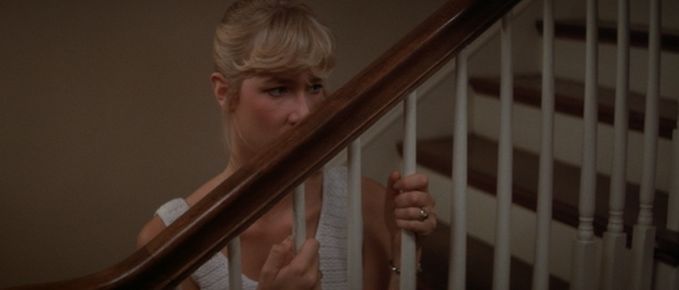 The Blue Velvet Project, #118
The Blue Velvet Project, #118
Second #5546, 92:26 1. Seconds after this shot, Sandy’s father, Detective Williams, will ask Jeffrey: “Is Sandy part of this?” It’s more along the lines of a warning than a question. Sandy, in the diagonally split screen, longs so deeply not just for Jeffrey but for the knowledge/power suggested by the office of her father. 2. Truth is a thing of this world: it is produced only by virtue of multiple forms of constraint. And it induces regular effects of power. Each society has its regime of truth, its “general politics” of truth: that is, the types of discourse which… Read more
-
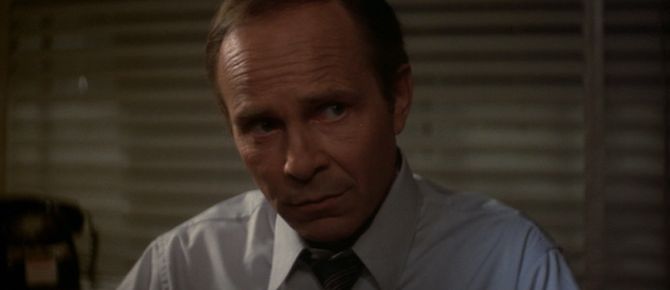 The Blue Velvet Project, #117
The Blue Velvet Project, #117
Second #5499, 91:39 This look—this sharp, suspicious, and accusatory look—is passed between Detective Williams and Jeffrey just moments after Jeffrey describes Frank as “a sick and dangerous man.” In the temporal flow of the film, the moment of this gaze passes very quickly, as the narrative draws our attention to what Jeffrey (who has brought along his black and white surveillance photographs) tells Detective Williams about Frank and his dark goings-on. And yet, when the film is frozen and this frame from second #5499 is de-linked from linear chronology, the Detective’s look takes on a new shade of meaning, one… Read more
-
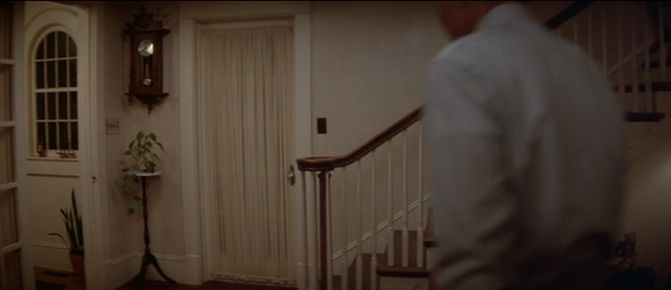 The Blue Velvet Project, #116
The Blue Velvet Project, #116
Second #5452, 90:52 In Camera Lucida: Reflections on Photography, Roland Barthes wrote about the studium (the cultural and political meanings of a photograph) and the punctum (the piercing of the photograph into the realm of personal meaning): Now, confronting millions of photographs . . . I sense no blind field: everything which happens within the frame dies absolutely once this frame is passed beyond. When we define the Photograph as a motionless image, this does not mean only that the figures it represents do not move; it means they do not emerge, do not leave: they are anesthetized and fastened… Read more
